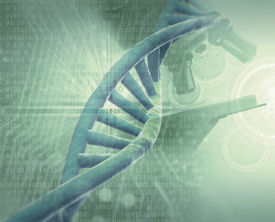Fleshing out the debate over meat from cloned animals
Warnings, recalls, label changes, and approvals.
As primary care providers, we are frequently asked about issues that aren't strictly related to diagnoses and treatments and, increasingly, food safety seems to be on the minds of patients. The general population is on edge after reading about contaminated spinach, adulterated pet foods and bovine growth hormone lawsuits. Enter another link in the worrisome food chain: cloned animals.

In January, the FDA issued the final version of a report lifting the voluntary moratorium in place since 2001 on the sale of foodstuffs from cloned animals, including cows, pigs and goats. This culminates years of scientific review and debate by entities including the FDA's Center for Veterinary Medicine, the U.S. National Academy of Sciences, the biotech industry, Congress and a cadre of consumer organizations. The European Union concluded that foods from cloned animals are safe but hasn't issued a final decision, while New Zealand, Australia, Canada and Argentina, among others, are still examining the issue.
What should we tell our patients when they ask about eating meat from cloned animals? The short answer: “There doesn't appear to be any credible evidence that foodstuffs from cloned animals are unsafe or lacking in nutritional value, and you have been eating cloned foods all along.”
How so? That box of clementines in the fridge? You guessed it: clones. The next time you go to the greenhouse, look at the labels on fruit trees for the term “asexually propagated,” in short: a plant clone. Further, despite the FDA's voluntary moratorium on introducing cloned animals into the food supply, as much as 300,000 kg of meat and more than 2 million liters of milk derived from clones has likely already made its way to your and your patients' tables with no evidence of ill effects. The meat and milk were from animals derived using early techniques for animal cloning: embryo splitting (simply taking a very early embryo and divvying it up) or embryonic cell nuclear transfer (transferring the nuclei harvested from an early embryo into new enucleated eggs to make new identical embryos).
Since the late ‘80s, cloning of commercially viable livestock species has been possible (remember Dolly?) and more recently the newest technique, somatic cell nuclear transfer (SCNT), has been improved upon to make this approach more viable as a way to capture and maintain valuable livestock characteristics. SCNT for creating clones involves taking the nuclei containing the entire genome from a skin cell of a prize adult milk cow and inserting it into an egg cell that has had its nuclei removed. The new egg is then stimulated in a way that causes a truly remarkable resetting of the programming of the genetic material from the skin cell, allowing for the development of an embryo that can be implanted in a surrogate cow.
Occasionally, the first generation of animals derived from this approach has early developmental difficulties, but on the whole the process works remarkably well to create healthy, genetically identical offspring. Given the expense of the process, most of these animals will become breeding stock and enter the food supply only at the end of their reproductive lifespans.
Conceptually, there is little reason to believe that there would be any danger from consuming these animals. Unlike the case of genetically modified organisms, no new genes have been created or destroyed in the process; any risk would have to arise from the switching on or off of some critical previously existing pathway during reprogramming of the donor nuclei.
Further, that alteration would have to affect the food value of the animal, and not the animal itself. It seems highly unlikely that a perfectly healthy adult animal derived from these techniques would be in some way toxic or inferior nutritionally from any other animal. Numerous studies of the chemistry and nutritional value of products from cloned animals support that they are indistinguishable from products from sexually propagated animals (for several excellent articles on the topic see the January 2007 issue of Nature Biotechnology).
Given the competing issues affecting the health of your patients, you can reassure them that eating products from cloned animals isn't a topic they should lose sleep over. A triple cheeseburger and pint of ice cream from any source are bad.



